The Making Of The National Movement 1870S To 1947 - Class 8 History - Extra Questions
Which areas did the Western Bengal province comprise?
Name the song composed by Rabindranath Tagore during the anti-partition agitation.
Look at the picture and answer the following questions.What is the name of the person in the picture?
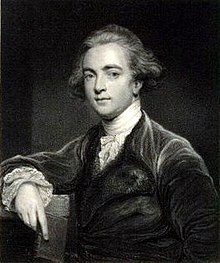
What was meant by the Quit India Movement?
What was unfair practice in Gandhi’s eyes?
What is meant by the terms: (i) Swadeshi (ii) Boycott?
Match the Name and Nickname
Match the following-
Write any two points of criticism leveled against the Early Nationalists.
Identify the person in the picture and answer the following question:
His views on nationalism education.
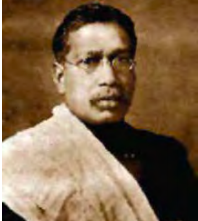
In what unique way, was the Anti-Partition day observed in Bengal?
What were Curzon's two real motives behind the Partition of Bengal?
When was Bengal partitioned? Name the viceroy responsible for it.
Which areas did the new East Bengal province comprise after the partition of Bengal?
How did nationalist leaders mobilise the masses in the Swadeshi and Boycott Movements?
The methods of the Early Nationalists were criticised as inadequate and half-hearted. In this context, briefly describe the following:
(a) Nature of their methods.
(b) Reasons for the partial failure of their methods.
(c) The final outcome of their efforts.
What virtues did the Swadeshi Movement instil among the Indians?
Give the meaning of Boycott as used for the Boycott Movement in 1905 and mention its four fold programme.
One of Lord Curzon's administrative measures that resulted in a strong resentment from the masses was the Partition of Bengal inIn this context, answer the following questions:
(a) What was Lord Curzon's argument in favour of the Partition of Bengal? How did the Nationalists interpret Lord Curzon's motives?
(b) How did the people react to the Partition of Bengal?
(c) What was the impact of the Swadeshi Movement on Indian Industries?
What type of flag was designed during the `Swadeshi Movement' in Bengal? Explain its main features.
What is meant by Home Rule? In which country was it first demanded?
Why did Gandhiji launch satyagraha at Ahmedabad in 1918?
What were the objectives of the Home Rule Movement in India?
State two reasons for the partial failure of the Swadeshi Movement.
State the reaction of the British rulers towards the Home Rule Movement.
Study the picture and answer the following questions:
(a) Identify the event and name the movement to which it belonged.
(b) What was the reason for launching this movement?
(c) What was the impact of this movement on the National movement?
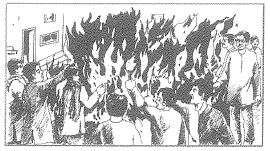
State two main objectives of the Non-Cooperation Movement launched by Gandhiji.
When and why was Simon Commission appointed?
Why was the Simon Commission boycotted every where? Give one reason.
Name the three components of the constructive programme adopted by Gandhiji after the suspension of the Non-Cooperation Movement.
Name any one important National Educational Institution established during the Non-Cooperation Movement.
Name the National leader who succumbed to the lathi charge during the protest movement against the Simon Commission.
When and by whom was the Civil Disobedience Movement launched?
What was the outcome of Gandhiji's satyagraha at Ahmedabad?
How did Gandhiji describe the Cripps' proposals?
Who constituted the Cabinet Mission?
When and why was the Cripps Mission sent to India?
Who composed the national song 'Bande Mataram'?
Write any two important points in the Cripps Offer.
What was the purpose of sending the Cabinet Mission to India in 1946?
The Quit India Movement was short-lived but it results had far reaching consequences. In this context, answer the following questions:
(a) How did the Movement demonstrate the depth of national feelings?
(b) In what way did it highlight the people's struggle and sacrifice?
(c) What impact did it have on the British?
List down the different programmes under the Civil Disobedience Movement.
"Moderates insisted on peaceful negotiation with the British". is the statement true?
What kind of status was promised to India after the War by Sir Stafford Cripps?
Why is the Partition of India a sad event in the history of India?
Answer the following in 1-2 sentences.
What led to the Civil Disobedience Movement in 1930?
Answer the following in 1-2 sentences.
What was the importance of the Lahore session of 1929 in the history of India?
Write short note on Cabinet Mission.
Name any three political associations which were formed prior to the Indian National Congress. What led to the formation of it?
Fill in the blanks.
After 1923 the Congress devoted itself to the ______________ Programme.
Fill in the blanks.
The Civil Disobedience movement started with the ____________________ of Gandhiji.
Write whether the following statements are True/False.
Gandhiji was born on 2nd October. We celebrate his birthday as Gandhi Jayanti.
State three causes that led to the partition of India.
Name the place, where Indian National Congress Session was held in December $$1920$$.
Two features- A and B are marked in the given political outline map of
India. Identify these features with the help of the following
information and write their correct names on the lines marked in the
map:A. The place, where the Indian National Congress Session was held in 1927.
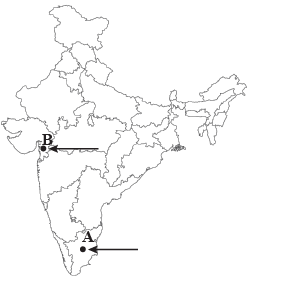
"Dalit participation was limited in the Civil Disobedience Movement". Examine the statement.
Why was Congress reluctant to allow women to hold any position of authority within the organisation? How did women participate in Civil Disobedience Movement? Explain.
State any two objectives of the Muslim League.
The Quit India Resolution in 1942 was one of the final calls given by Gandhi for the British to leave India. Moving towards Independence, Lord Mountbatten's Plan was significant. In this context, answer the following:
State two reasons for the launching of the Quit India Movement.
Explain the role of Subhash Chandra Bose in India's freedom struggle.
Who were the Moderates? How did they propose to struggle against British rule?
Answer the following questions related to the given picture :
A) Name the person in the given picture:
B) Name the book written by him:
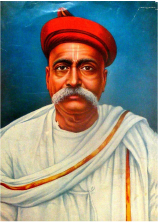
Why did Mahatma Gandhi Launch the 'Non-Cooperation Movement'?How did this movement unite the country? Explain.
State two methods of political struggle evolved by Mahatma Gandhi as part of the National Movement.
Define Satyagraha. How does it differ from Passive Resistance?
Where and when Mahatma Gandhi used his method of Satyagraha for the first time in India?
What is meant by Swadeshi? Why did Gandhiji lay emphasis on Swadeshi?
What made Gandhiji withdraw the Civil Disobedience Movement in 1934?
The Cabinet Mission was commissioned by the British Government in February 1946 to find a solution for constitutional reforms in India. In the light of this, answer the following questions:
(a) Who were the members of the Cabinet Mission?
(b) Why was the Cabinet Mission appointed?
(a) Why the Mission didn't concede to the League's demand for Pakistan?
Answer the following in 3-4 sentences.
What factors led to the Civil Disobedience Movement in 1930?
"Dandi March of Mahatma Gandhi was an effective tool of opposing against British rule." Explain.
Who did the Indian National Congress wish to speak for?
Why was the Congress session held at Lahore in 1929 significant to the National Movement?
The Partition of Bengal and the formation of the Muslim League were two important events that had its impact on the National Struggle for independence. In this context, explain the following:Objectives of the Muslim League.
One of Lord Curzon's administrative measures that resulted in a strong resentment from the masses was the Partition of Bengal inIn this context, answer the following question.
What was the impact of the Swadeshi Movement on Indian industries?
The establishment of the Indian National Congress led to the development
of the National Movement in India. In this context answer the
following:
When was the Indian National Congress established? Who presided over its first session?
The Congress working committee passed the famous Quit India resolution
at Wardha in JulyWith reference to this answer the following
questions:What was the impact and significance of this movement?
Reason why the early Congressmen were called Moderates.
Explain the impact of the Non-Cooperation movement with respect to India's later struggles for freedom?
Answer the following question in 80 to 100 words:
Discuss the Gandhian phase of India Freedom Movement.
Any five important events between the year 1930 to 1950.
Answer in 5-6 sentences:
Subhash Chandra Bose played a very important role in the freedom movement. Explain.
Match the items in List-A with List-B.
Explain the Role of Subhash Chandra Bose in Indian National Movement.
What role did Mahatma Gandhi play in our Freedom Movement?
The period between $$1920$$ to $$1947$$ was marked with major events and
reforms that finally led us to our Independence. In this context,
answer the following questions.Mention any four clauses of the Cabinet Mission Plan.
Evaluate the role of business classes in the 'Civil Disobedience Movement'.
Mention any two causes of the failures of the Quit-India-Movement.
Name the two main Associations that were the precursors of the Indian National Congress.
With reference to the growth of national consciousness in India explain the following :
The immediate objectives of the Indian National Congress.
Who founded the Home Rule Leagues in India? What was its objective?
Mention two reasons for the Moderate's faith in the British sense of justice.
One of Lord Curzon's administrative measures that resulted in a strong resentment from the masses was the Partition of Bengal inIn this context, answer the following question.
How did the people react to the Partition of Bengal?
Mention any one provision each of the Gandhi-Irwin Pact signed in 1931.
Gandhiji introduced new ideas in politics and adopted new methods to give a new direction to the political movement. In this context, answer the following question.
Which mass struggle was launched by him on non-violent lines in $$1920$$? Explain in brief the programmes of such a campaign.
Gandhiji introduced new ideas in politics and adopted new methods to give a new direction to the political movement. In this context, answer the following question.
Gandhiji's Social Ideals.
Mention two important contributions of Lala Lajpat Rai.
In 1930 Mahatma Gandhi's demands were rejected by the British, as a result of which he launched the Civil Disobedience Movement. In the contest explain the following :
Significance of the Second Round Table Conference.
Name the Presidents who presided over the first two Sessions of the Indian National Congress.
Which period of Indian history is known as the Gandhian era and why?
The Early Nationalists initially believed that the British wanted to be just to India but were unaware of the real state of affairs. In this context, answer the following questions:
(a) What was the attitude of these leaders towards the British?
(b) Why did they develop such an attitude?
(c) How did they expose the true nature of British rule in India?
How was the Civil Disobedience Movement different from the Non-Cooperation Movement?
What was the main impact of the Non-Cooperation Movement?
Name three events which disillusioned Gandhiji and turned him into a non-cooperator from a cooperator with the British government.
What was the impact of the Civil Disobedience Movement?
Mention any two terms (provisions) of the Gandhi-Irwin Pact.
Class 8 History Extra Questions
- Civilising The Native Educating The Nation Extra Questions
- From Trade To Territory Extra Questions
- How When And Where Extra Questions
- India After Independence Extra Questions
- Ruling The Countryside Extra Questions
- The Making Of The National Movement 1870S To 1947 Extra Questions
- Tribals Dikus And The Vision Of A Golden Age Extra Questions
- Weaver Iron Smelter And Factory Owners Extra Questions
- When People Rebel Extra Questions
- Women Caste And Reform Extra Questions